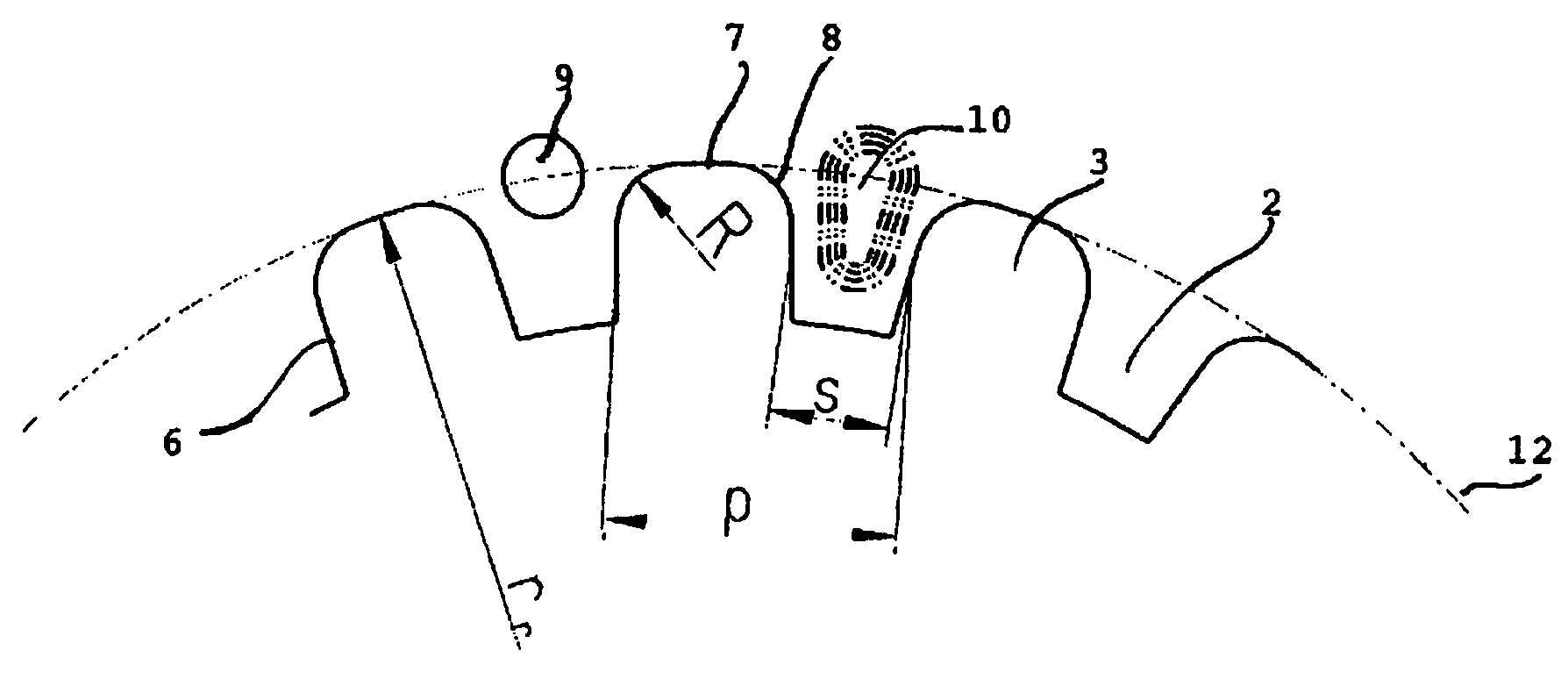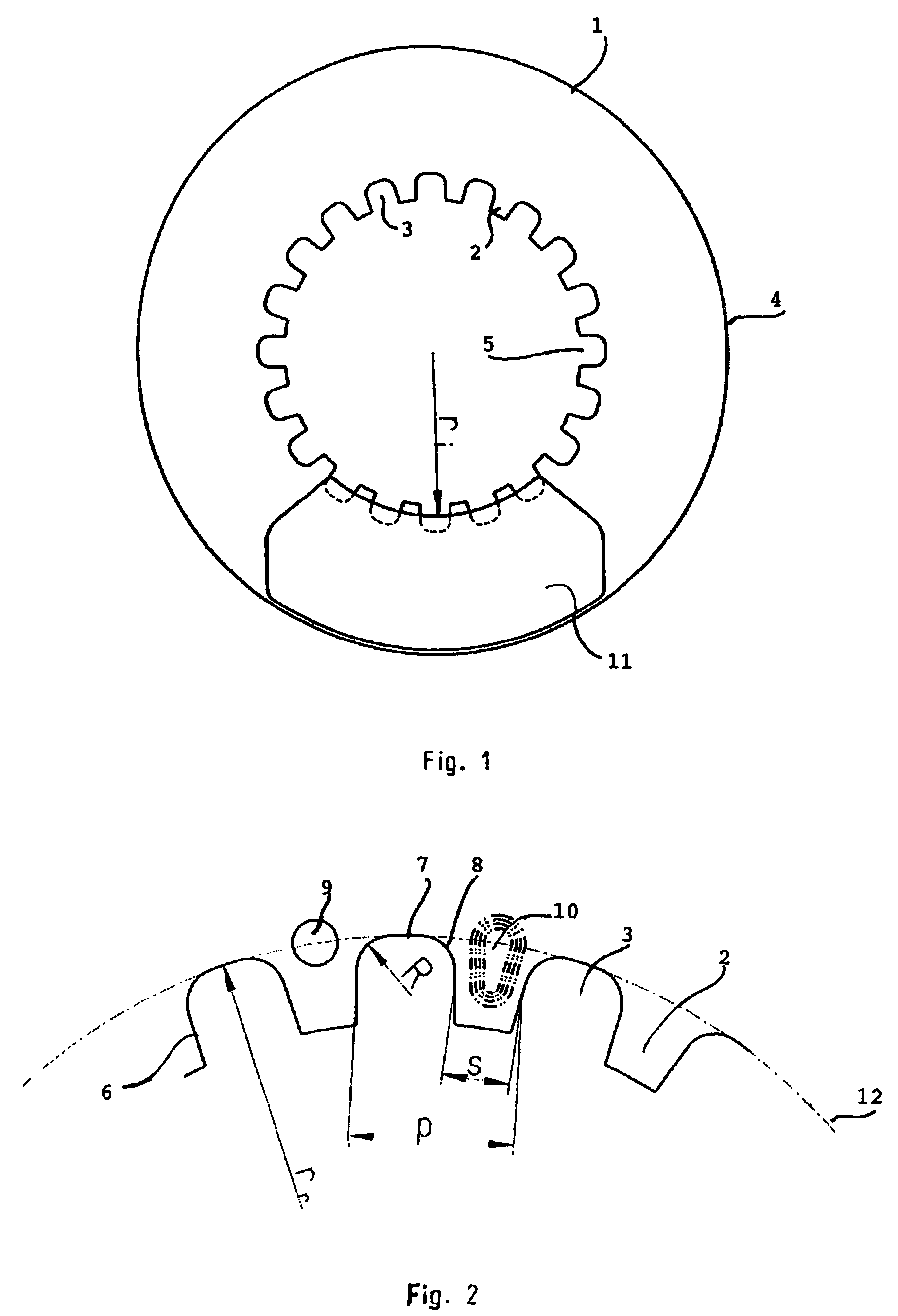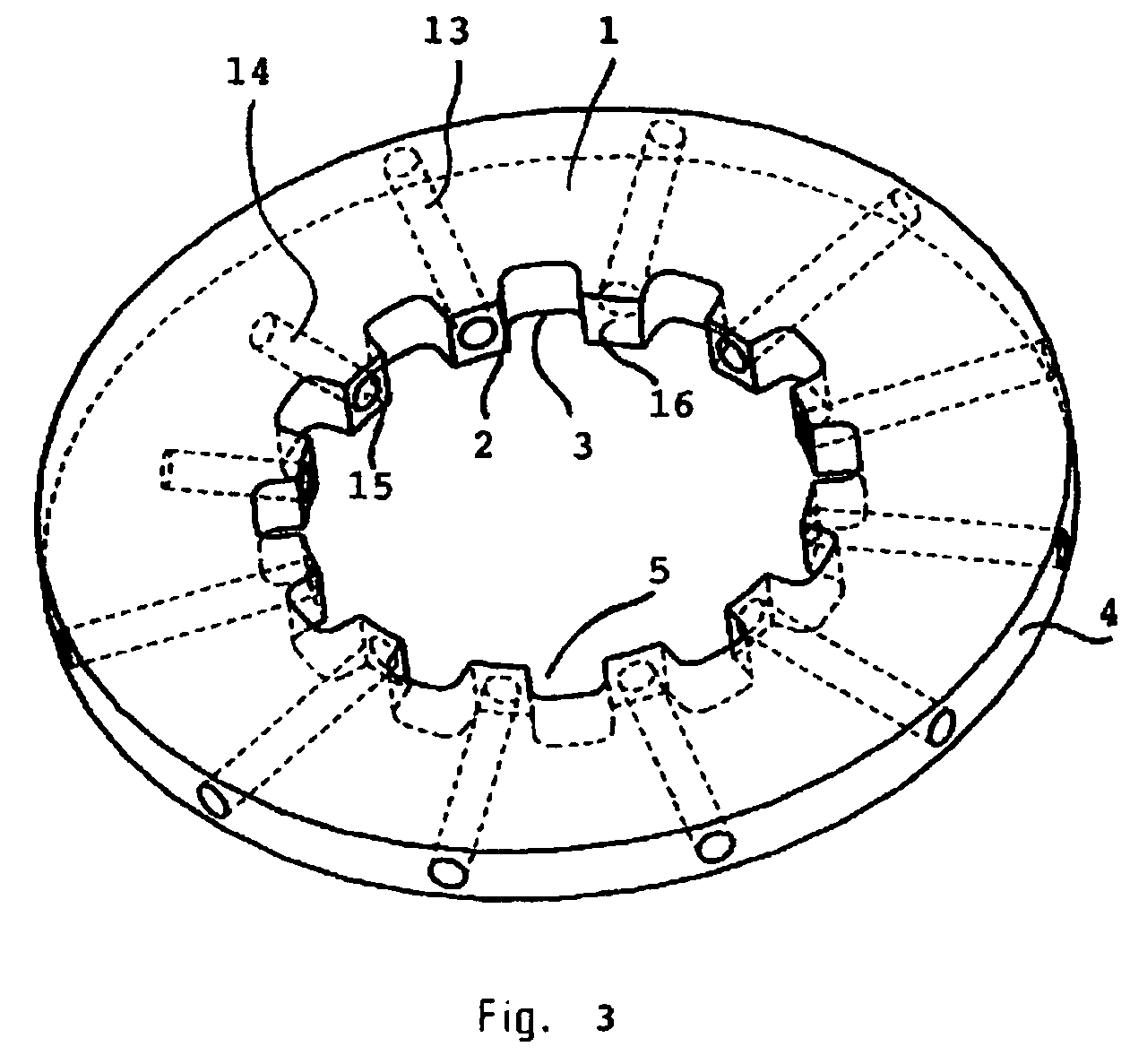Disc brake
a disc brake and disc brake technology, applied in the direction of brake discs, braking systems, transportation and packaging, etc., can solve the problems of uneven heating, achieve the effects of wide gaps, reduce the risk of crack formation, and widen the gap between the material thickness of each tooth
- Summary
- Abstract
- Description
- Claims
- Application Information
AI Technical Summary
Benefits of technology
Problems solved by technology
Method used
Image
Examples
Embodiment Construction
[0020]The brake disc 1 of FIG. 1 has a number of teeth 2 separated by gaps 3. The brake disc 1 is circular with an outer circumference 4 and an inner circumference 5. The teeth 2 are arranged on the inner circumference 5 of the brake disc 1. The brake disc 1 is to be received on a hub or other central part (not shown) of a disc brake. The teeth 2 of the brake disc 1 are to co-operate with teeth, splines or the like on the central part. The disc 1 is received on the central part fixed in rotational direction and is received either fixed or moveable in axial direction. A person skilled in the art realises that the number of teeth 2 and gaps 3 may vary from brake disc 1 to brake disc. Also the form, placement and size of the teeth 2 and gaps 3 may vary both between different discs 1 and in one disc 1. Groups of teeth 2 may e.g. be separated by gaps being larger than the gaps between the teeth of the group in one and the same brake disc.
[0021]Brake pads 11 or the like will coact with th...
PUM
 Login to View More
Login to View More Abstract
Description
Claims
Application Information
 Login to View More
Login to View More - R&D
- Intellectual Property
- Life Sciences
- Materials
- Tech Scout
- Unparalleled Data Quality
- Higher Quality Content
- 60% Fewer Hallucinations
Browse by: Latest US Patents, China's latest patents, Technical Efficacy Thesaurus, Application Domain, Technology Topic, Popular Technical Reports.
© 2025 PatSnap. All rights reserved.Legal|Privacy policy|Modern Slavery Act Transparency Statement|Sitemap|About US| Contact US: help@patsnap.com



